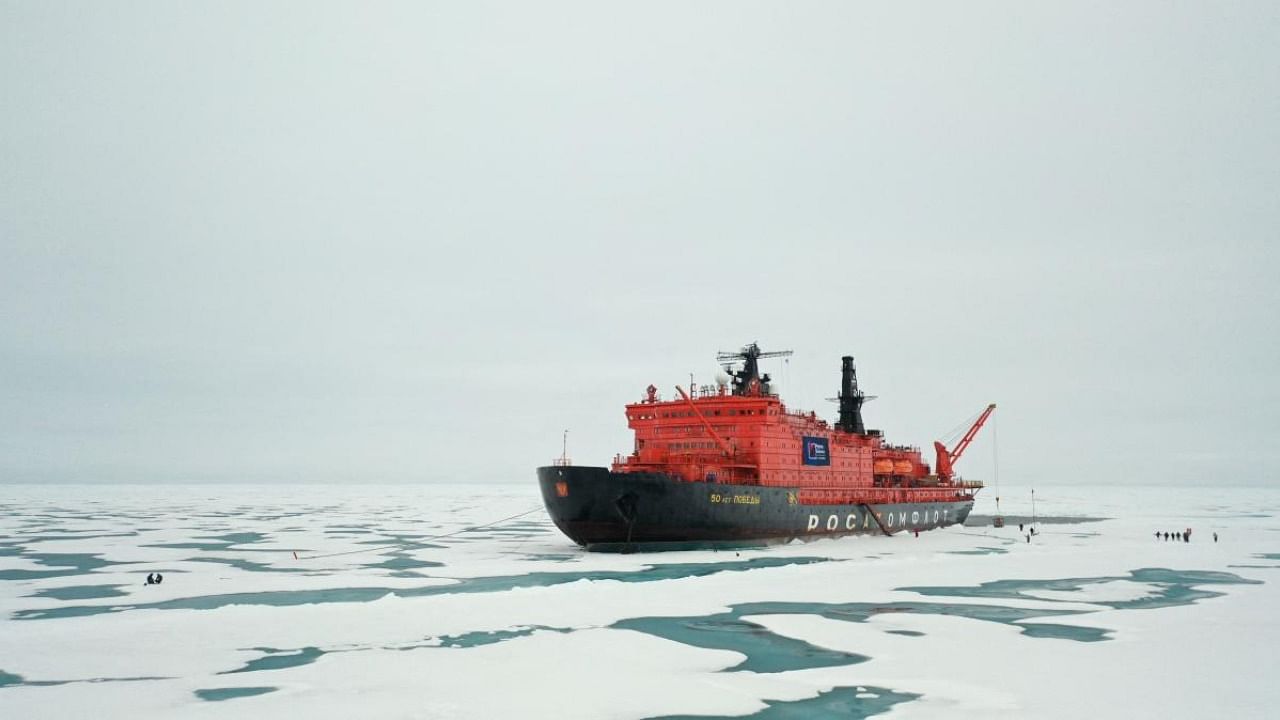
Smoking a pipe and looking out over the vast, icy Arctic, captain Dmitry Lobusov sounds his ship's horn to signal to passengers they are near their destination: the North Pole.
The Arctic Ocean is too deep to drop anchor, but a thick ice embankment offers a dock for Lobusov's giant vessel -- one among Russia's growing fleet of nuclear-powered icebreakers.
The 160-metre (525-foot) ship called "50 Let Pobedy" ("50 Years of Victory") reduces speed.
"Take a left, we'll stop here," Lobusov tells Diana Kidzhi, his second in command and the most senior woman in Russia's nuclear icebreaker fleet.
Thirty minutes later, the giant red-and-black ship is stopped within short walking distance of Earth's most northerly point.
"Well done," Lobusov says, shaking Kidzhi's hand and disembarking from the deck.
The passengers, including a gaggle of high school students who won places on the trip in a competition, step onto the slippery ice to take photos.
The ice they're standing on -- directly above the ocean floor marking the North Pole -- is shifting in Arctic currents, slowly taking them away from the Pole.
"You always find your own North Pole," says Viktor Boyarsky, a 70-year-old Russian explorer returning to the Arctic.
It has taken the icebreaker three and a half days to traverse the 2,400 kilometres (1,500 miles) to the North Pole from Murmansk, the base of Russia's Northern Fleet.
The journey is only possible in summer, when ice cover is at its lowest. Climate change is making the trip gradually easier year by year.
Still, the 95-strong crew is alert for masses of ice that could impede the ship's progress.
The bridge is in constant contact with the crew controlling the ship's nuclear reactor.
Vladimir Yudin, the ship's chief mechanical engineer, is in charge of its 75,000-horsepower engine, the equivalent of about 75 Formula 1 racecars.
"We have 1,144 settings to manage and just as many sensors that need to be checked regularly," Yudin says.
The engine propels forward the ship's body, which is designed to cut through ice. The front is spoon-shaped, Lobusov explains.
"This allows us to get stuck in ice less often and to better penetrate it," says the 57-year-old, who has spent close to half his life in the Arctic.
The hull is also coated in stainless steel, he says, helping the giant ship glide smoothly and disturbing polar bears in the region as little as possible.